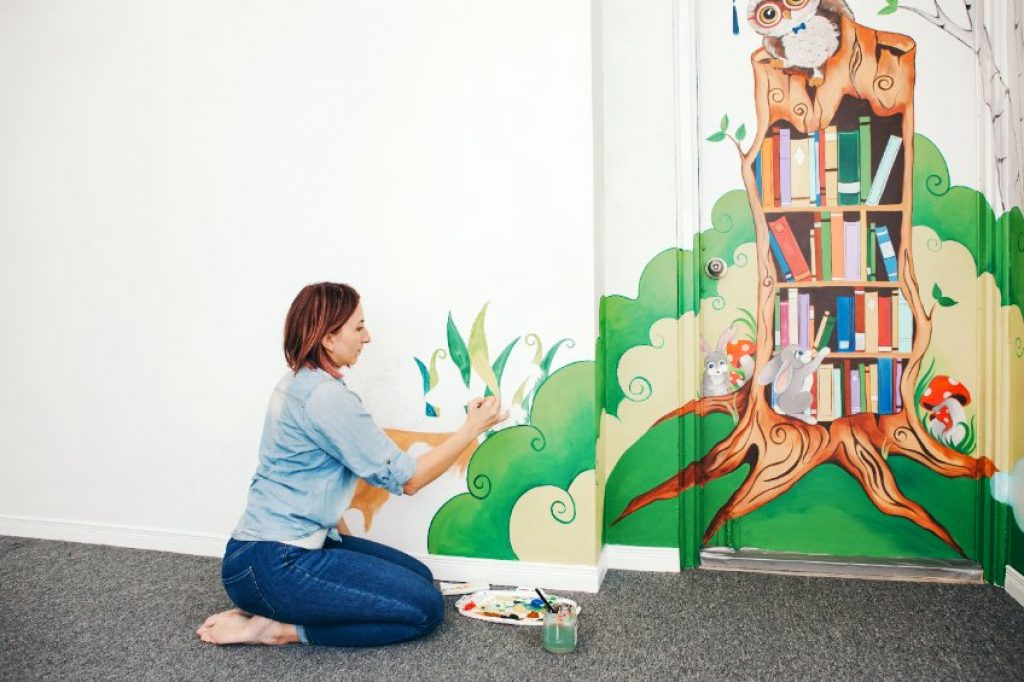Art Installation Insurance
The world of art installation is vast, intricate, and beautifully captivating. Art Installation Insurance embodies the expression of thought, sentiment, and passion, often translated into tangible forms that captivate audiences worldwide.
Need
Art Installation Insurance ?
Get Your Free Quote
But like all valuable entities, art installations are also accompanied by their share of risks.
To ensure these masterpieces and the businesses behind them are protected, art installation insurance becomes indispensable.

Art Installation Businesses: An Overview
Art Installation Businesses operate in a diverse landscape. They encompass artists, curators, and professionals who work with galleries, museums, public spaces, and private collections to showcase art installations. Their services might include the design, transport, setup, maintenance, and deinstallation of art pieces. Some may specialize in indoor installations, while others focus on outdoor or site-specific installations. The scale can range from small, intimate exhibits to grand, public displays.
Art Installation Service Types
Art installation service types are manifold, addressing every aspect of an artwork’s life cycle from ideation to preservation. The realm of art is complex, demanding attention to detail, sensitivity to the artwork, and adherence to the artist’s intentions. Here’s a deeper dive into these service types and additional ones that define the art installation world:
1. Design and Conceptualization
This stage is the bedrock of the art installation process. It’s where ideas germinate and take their initial shape.
- Consultation: Before any design begins, professionals collaborate with artists to understand their vision, theme, and desired impact.
- Modeling and Prototyping: Using 3D modeling tools or physical maquettes, designers create a smaller version of the installation to visualize and tweak it before actual implementation.
- Material Selection: The choice of materials, be it metals, glass, wood, or sustainable materials, is crucial for the artwork’s longevity and visual appeal.
2. Transportation and Logistics
Moving art, especially large installations, demands precision, expertise, and care.
Small Business General Liability Protection:
Get Your Free Quote
- Custom Crating: Artworks often require custom-built crates that accommodate their unique shape and ensure protection.
- Climate Control: Many artworks are sensitive to temperature and humidity. Climate-controlled logistics ensures the artwork’s safety during transit.
- Documentation and Customs: For international shipping, dealing with customs, tariffs, and documentation is a meticulous task.
3. Installation and Setup
The actual realization of the artist’s vision happens here.
- Site Preparation: Before the installation begins, the site is prepped, which may involve cleaning, fortifying, or even altering the space to accommodate the artwork.
- Technical Assistance: Many modern art installations involve digital components or intricate lighting. Technicians ensure these elements function seamlessly.
- Safety Protocols: Ensuring that the installation poses no hazard to visitors, especially in public spaces, is of utmost importance.
4. Maintenance and Conservation
Art, like all things, can degrade over time, but proper care can prolong its life.
- Routine Checks: Professionals often schedule routine inspections to check for wear, tear, or any potential issues.
- Restoration: If an artwork gets damaged or starts showing signs of aging, restoration experts can often rejuvenate it, ensuring it remains as the artist intended.
- Digital Archiving: In today’s digital age, many artworks or details about them are archived digitally, ensuring they’re accessible for future generations.
5. Deinstallation and Storage
When it’s time for an artwork to be moved or stored, it needs to be done with care.
- Cataloging: Before storing, each piece is cataloged, noting its condition, dimensions, and any special handling instructions.
- Specialized Storage: Some artworks require specific storage conditions, such as controlled temperature, humidity, or light.
- Reintegration: If an artwork is to be reintroduced or exhibited elsewhere, experts ensure it’s done without compromising its integrity.
Additional Service: Curatorial and Educational Services
Beyond the physical handling of art, there’s a narrative and educational aspect.
- Curatorial Expertise: Curators guide the thematic representation of artworks, determining how they’re showcased in relation to other pieces and the overarching theme of an exhibition.
- Guided Tours and Workshops: Many installations come with guided tours, ensuring visitors grasp the depth and nuances of the artwork. Workshops might also be organized, fostering deeper engagement.
Risks in Art Installation Businesses: A Comprehensive Analysis
Art installations are a culmination of creativity, technical expertise, and logistical prowess. But with such intricate processes come various risks. Delving deeper, we identify more risks in the art installation world, supported by examples for clarity:
| Risk Type | Description | Example |
|---|---|---|
| Physical Damage | Physical damage remains a primary concern for art installations. | A delicate glass installation being set up for a display might shatter if not handled with care. Similarly, a digital art installation could malfunction due to water seepage or power surges. |
| Theft and Vandalism | Art, given its value—both monetary and symbolic—is susceptible to theft and malicious damage. | A famous traveling installation might be targeted by thieves aware of its value. Alternatively, an outdoor political art piece could be defaced by those opposing its message. |
| Professional Errors | Misjudgments or oversights by professionals can have significant consequences. | If an art installation requires specific lighting to interpret the artist’s message and the lighting setup is incorrect, the intended impact could be lost. Or, if an artwork requires a specific sequence for assembly, and it’s done out of order, the final piece might not represent the artist’s original vision. |
| Public Liability | Art installations, especially in public spaces, can sometimes pose risks to the audience. | A maze-like art installation might lack proper emergency exits, posing a risk during emergencies. Or, an art piece designed to be interactive might malfunction and harm a participant. |
| Financial Risks | The world of art, while glamorous, also deals with monetary challenges. | An art installation event could be postponed due to external factors like a pandemic, leading to significant losses from pre-booked venues, logistics, and promotions. |
| Reputational Risks | The reputation of artists, curators, and galleries is paramount. Any incident, misunderstanding, or negative publicity can affect their standing in the art community. | If an art installation is found to have inadvertently plagiarized another artist’s work, it could lead to negative press and legal challenges, damaging the reputation of all parties involved. |
| Environmental Risks | Environmental factors can pose risks, especially for outdoor installations. | An outdoor installation made of biodegradable material might decompose faster than anticipated due to unexpected rainfall. Or, a sound-based installation in a park might get drowned out during a storm, affecting its reception. |
| Technical Failures | Modern art often integrates technology, making it vulnerable to technical glitches. | A virtual reality (VR) art installation could experience software issues, preventing viewers from experiencing the art. Or, an installation with a synchronized light show might face synchronization issues, disrupting the show. |
| Legal and Regulatory Risks | There can be legal implications tied to the display, content, or nature of art installations. | An art installation commenting on a political issue might face legal challenges in certain jurisdictions. Or, an installation in a public space might not have acquired all necessary permits, leading to legal complications. |
Business Insurance Types to Art Installation
The world of art installation is intricate, and so are the associated risks. Let’s delve deeper into the relevance of various business insurance types for art installation businesses:
1. General Liability
- Description: General liability insurance safeguards businesses from financial liabilities arising from accidents that result in bodily injury or property damage. It covers legal defense costs, settlements, and medical payments.
- Art Installation Example: Imagine a large art installation in a public space that uses water features. A visitor might slip on the wet surface around the installation, resulting in injuries. General liability insurance would protect the art installation business from potential lawsuits and medical claims resulting from the accident.
2. Professional Liability Insurance (Errors & Omissions)
- Description: E&O insurance is designed to protect professionals against liabilities arising from mistakes or negligence in their specialized services.
- Art Installation Example: An art conservation expert, while working on a historical painting for an installation, might use a chemical solution that inadvertently damages the artwork. If the owner of the piece sues the expert for the diminished value of the artwork, professional liability insurance would cover the legal defense and potential settlements.
3. Commercial Auto
- Description: Commercial auto insurance protects businesses from liabilities arising from accidents involving their commercial vehicles.
- Art Installation Example: A company specialized in transporting art pieces might have a fleet of climate-controlled trucks. If one of these trucks gets involved in an accident while moving a valuable sculpture, commercial auto insurance would cover the repair costs of the vehicle and any damages to the transported art.
4. Workers’ Compensation
- Description: Workers’ compensation insurance provides medical benefits and wage replacement to employees who get injured while on the job.
- Art Installation Example: An employee, while working on the setup of a heavy sculpture, might strain their back or get injured by a falling tool. Workers’ compensation would cover the employee’s medical bills and potentially compensate for the time they couldn’t work due to the injury.
5. Tools and Equipment
- Description: Tools insurance covers the specialized tools and equipment a business owns or rents. It protects against risks like theft, vandalism, or physical damages.
- Art Installation Example: Consider a business that uses high-end projectors for digital art installations. If there’s a sudden power surge at the installation site, causing the projectors to malfunction, tools and equipment insurance would cover the repair or replacement costs of the damaged projectors.
Given the unique nature and high stakes of art installation businesses, having the right insurance in place is paramount. It not only safeguards the financial health of the business but also ensures the continuity of creative expression without the overshadowing concern of potential liabilities.
Get Your Business Insurance:
Get Your Free Quote
Additional Relevant Insurance Coverage: Business Owners Policy (BOP)
A Business Owners Policy (BOP) combines various insurance coverages into a single package, tailored for small to medium-sized businesses. For art installation businesses, a BOP might include property insurance for office spaces, general liability, business interruption insurance (covering lost income due to unforeseen events), and more. Given the multifaceted nature of art installation services, a BOP offers comprehensive protection.
Final Thoughts on Art Installation Insurance
Art, in all its diverse forms, serves as a testament to human creativity, emotion, and expression. The process of art installation is a dance between preserving the essence of this creativity and navigating the practical realities of the physical world. As with any dance, there’s always a risk of missteps.
Art Installation Insurance doesn’t just represent a financial safety net; it’s a commitment to safeguarding artistic integrity. It ensures that the myriad challenges, from transportation mishaps to unforeseen accidents, don’t overshadow the primary goal: the presentation of art in its truest form to the world.
For artists, curators, and installation professionals, this insurance is more than a contractual necessity. It’s peace of mind. It’s the knowledge that while art may be timeless, its journey through the world is fraught with temporal risks. And in the face of these challenges, art installation insurance stands as a silent protector, allowing the world of art to flourish, inspire, and resonate without bounds.
In a world increasingly defined by transience and uncertainty, art installation insurance becomes a beacon of stability for the art community, ensuring that the legacy of creativity continues undeterred, touching souls, and inspiring futures.

